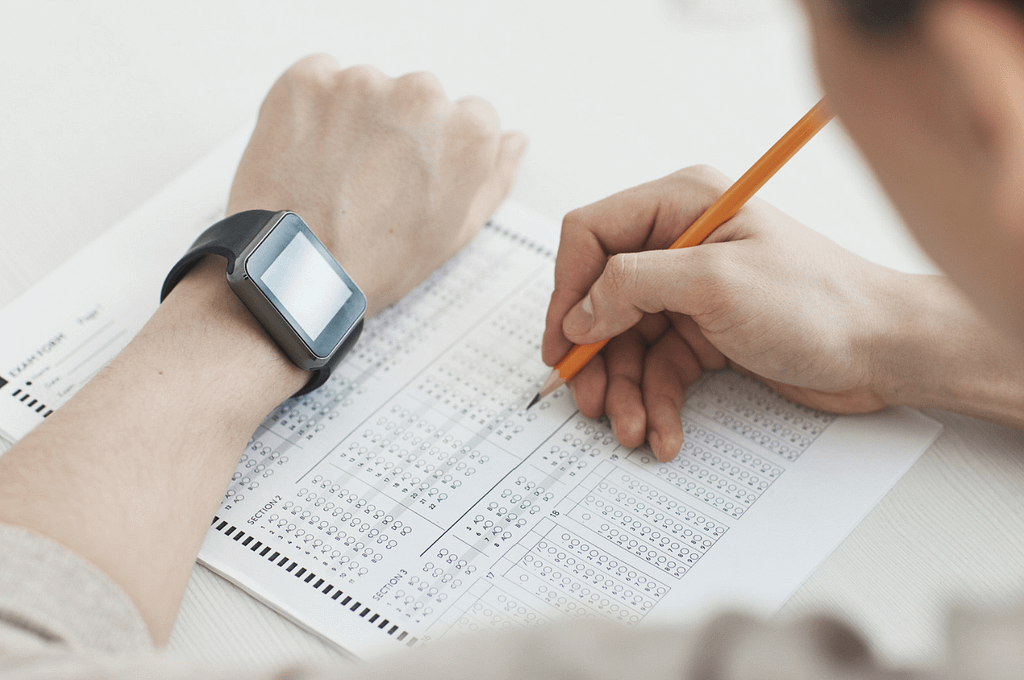The fact that Chinese high school students face tough competition is fairly well-known amongst the large numbers of international university faculty who have Chinese students in their classrooms. However, the specific source of that intense pressure – i.e. the “gaokao” (pronounced “gow cow”), China’s notorious university entrance exam – is much less well understood.
The gaokao is more than just an exam; it is a formative experience in the lives of Chinese high school students. Held annually, this exam is the culmination of twelve years of schooling and is seen as the key to a successful future.
Learning more about the gaokao can help international faculty better connect with their Chinese students, understand where they are coming from, and improve their students’ scores (and faculty teaching evaluations!).
Read on for a guide on what international faculty need to know about the gaokao, based on my years of experience teaching and interacting with students who have been through it.
1. Who Takes the Gaokao?
Almost every mainland Chinese student in a mainland Chinese university (including joint venture universities) will have taken the gaokao. So, if you’re teaching in an institution in China, or teaching Chinese graduate students overseas whose undergraduate degree was earned in China, it’s almost certain that your students have been through the gaokao experience.
In addition, more and more universities in top overseas destinations for Chinese students such as the US and UK are admitting students based on gaokao scores, so at least some of the large numbers of Chinese undergraduates abroad have also taken the exam.
(Note: some students deliberately apply only for foreign universities in order to avoid the gaokao, in which case their educational experience will have been very different from that of their peers. As a result, if you want to connect better with your students, it’s important to understand whether or not they went through the gaokao process).
2. The Pressure of Preparation and Resulting Grading Anxiety
Where a student’s exam score ranks in their particular province is typically the key metric determining a student’s academic future (and by extension their teachers’ professional performance and parents’ approval), so students and schools are fiercely competitive. Understanding this context is crucial for appreciating the stress and anxiety that students may carry with them, even after they have got that coveted university place.
Preparation for the gaokao begins early, with students entering rigorous training several years before they actually sit down in the exam hall. Almost all schools set their schedules to maximize study time at the expense of extracurricular activities, mental health, and personal development. And, the intensity increases during the final year of high school, where students might study for up to 12 hours a day (or more…).
Recognizing the depth of this preparation can help faculty understand why some Chinese students might experience what seems like unduly extreme anxiety over grades, fiercely compare their grades with others, and focus on pleasing faculty over expressing themselves.
As a result, it’s really important for faculty to explicitly tell students that their learning is more important than their final grades. At the same time, however, in my experience developing very clear and objective grading rubrics helps to alleviate anxiety rather than increase it, as students have a clear understanding of how they will be assessed, instead of trying to read their professor’s mind.

3. The Gaokao and Essay Writing
In almost all cases (read on below for more about the exam’s structure and format), the gaokao includes some kind of essay component. However, the nature of gaokao essay questions, and what is valued in gaokao essay grading, is quite different from the “typical” argumentative essay that one finds across most Western academic institutions.
In particular, gaokao essay questions tend to be very broad and philosophical, with answers similarly broad. Likewise, an emphasis on social and/or moral good is valued in answers. That’s why (unless you tell them otherwise) you might find, for example, that your Chinese students’ written work focuses on how to make the world a better place, rather than analyzing how the world actually works, even if the question being posed is about the latter.
(For examples, check out this great summary of gaokao essay questions from the Chinese media outlet Caixin here).
This means that if you want your students to write an argumentative essay based on empirical evidence (in my own field, for example, this is the standard format for academic writing at the undergraduate level), you need to tell them that’s what you want and how to do it, especially if it’s their first year at university.
As well as providing specific, clear guidance on the purpose, format, and conventions of essay writing in an English-language social science context, I explicitly explain to students that the “gaokao” style of writing is not wrong, but that they are now writing for a different audience and in a different genre, and they need to adjust their communication style accordingly in order to be effective.
More generally, no matter whether you are faculty in the social sciences, humanities, arts, or natural sciences, helping students understand the meaning and importance of genre will help set them up for success not only in your course but across their wider academic lives.
(Feel free to reach out to me for a consultation if you want more information, including templates and samples, on the guidance I give to students).

4. Structure and Format
While China is often (mistakenly) thought of as a very centralized place, the gaokao exam – like much in the country – is administered provincially, which means that the exam is different in each of mainland China’s 34 provinces. Further complicating matters, the exam is in the process of being reformed, with different provinces at various stages of change.
However, in general you can expect your students who have taken the gaokao to have studied Chinese, mathematics, English, and outside of these core subjects focused either on natural sciences or humanities and social sciences.
In the past, the exam has been administered over a single period of two days in June (making those two days arguably the most pressurized of many your students’ lives thus far), although some reforms are spacing the examinations in different subjects over a longer period of time. Typically, it includes multiple choice, short answer, and essay questions (see above for more on essays), so you can expect your students to be familiar with answering these types of questions.
Thus far, few provinces have included oral components (for those that do, this forms part of the English language assessment). As a result, faculty who are turning to oral exams in the Chat-GPT era should be aware that this is an unfamiliar method of assessment for Chinese students, who may need some extra support to adapt to this medium.

5. Is the Gaokao Meritocratic?
China has a long tradition of using exams as a tool to allocate economic, social, and political opportunity, including university places. One major justification for this made by the Chinese government, scholars, and others, is that exams are meritocratic.
In theory, and sometimes in practice, a bright student from a highly disadvantaged socio-economic background can get into the country’s top universities (and therefore access to the top jobs in future), just by doing well in the gaokao.
In my view, the gaokao is more academically meritocratic than assessing students according to their interview capabilities, extracurricular experiences, and/or written coursework. Students from rich and well-connected families are much more likely to have the confidence, experience, and access to support to succeed in non-exam based assessments.
Likewise, faculty can expect that their students who are top gaokao scorers really are exceedingly bright in the conventional academic sense, as there is essentially no other way to do well in the exam other than to be intelligent and work hard, no matter how wealthy or well-connected your family is.
However, the fact that everyone in a given locality takes the same exam does not mean that everyone has access to the same preparation resources. While China recently (and controversially) cracked down on the private tutoring industry, the fact remains that rich students from major cities have access to better schools and more support with preparation. Likewise, due to local preferential policies, it’s easier for students from Beijing and Shanghai (which contain the country’s best universities) to gain access to the top schools in their city.
Therefore, to better connect with your Chinese students, I also really recommend taking the time to understand where they are from and what their background is (in particular, I have noticed that students from major cities, especially Beijing and Shanghai, are more confident, while students from smaller, less well-off locations may be less confident, but quietly extremely capable).
(I recommend this book if you are interested in a positive argument for meritocracy in China, and this article for the counter-argument).

Conclusion: Understand the Gaokao to Connect with your Chinese Students
The gaokao will have been one of the most important focal points of most of your Chinese students’ lives. Therefore, understanding more about the gaokao can really help faculty not only better guide their students academically, but also connect with them on a personal level.
In particular, faculty should bear in mind the following three key points: (1) the gaokao is a major source of grading anxiety, but steps can and should be taken to ameliorate this; (2) differences between gaokao essay writing and much academic writing common in English-language instructional contexts means students really benefit from clear, specific, guidance in this area; and (3) students from different places and backgrounds will nonetheless have had quite different gaokao experiences, and taking the time to appreciate these nuances can really help you better understand your students.
Would this article be helpful for someone you know? Click the links below to share ⬇
Check out more tips for academic success by following Discovery Hub on social media ⬇
Copyright @ 2024 Discovery Hub Educational Consulting (Suzhou) Ltd 探索枢纽教育咨询(苏州)有限公司.